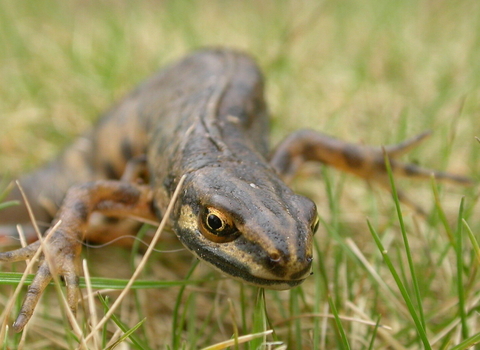©Philip Precey
Smooth newt
You are likely to spot the smooth newt in your garden or local pond. It breeds in water in summer and spends the rest of the year in grassland and woodland, hibernating over winter.
Scientific name
Lissotriton vulgarisWhen to see
March to OctoberSpecies information
Category
Statistics
Length: 7-11cmAverage lifespan: 6 years
Protected in the UK under the Wildlife and Countryside Act, 1981.
About
Newts are amphibians, breeding in ponds during the spring and spending most of the rest of the year feeding on invertebrates in woodland, hedgerows, marshes and tussocky grassland. They hibernate underground, among tree roots and in old walls. The smooth newt is also known as the 'common newt' and is the species you are most likely to find in your garden pond.How to identify
The smooth newt is grey-brown, with an orange belly and neat black spots all over. In the breeding season, males have a smooth crest running the full length of their body and tail.Distribution
Found throughout the country, except for parts of western Scotland, the west of Wales, the Isle of Man, the Channel Islands and the Isles of Scilly.Did you know?
Smooth newts eat insects, caterpillars, worms and slugs while on land, and crustaceans, molluscs and tadpoles when in the water. They are most active during the night.
Smooth newt © Philip Precey
Know your newt!
Discover facts about the various newt species you can see in our region, plus identification tips to help tell them apart.

Smooth newt © Philip Precey
Know your newt!
Discover facts about the various newt species you can see in our region, plus identification tips to help tell them apart.
